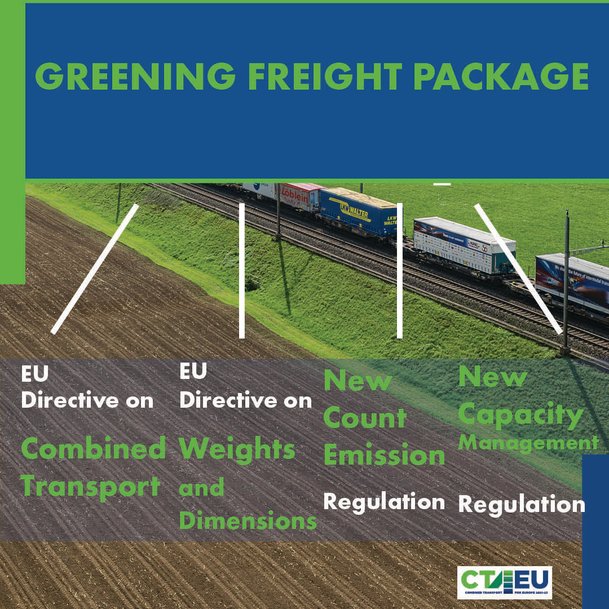railway-international.com
22
'23
Written on Modified on
Rail Sector flags concerns surrounding rushed revision of Weights & Dimensions Directive
The European Rail Sector has raised concerns about the uncoupling of the Weights & Dimensions Directive revision from the upcoming revision of the Combined Transport Directive, and the speed at which the Weights & Dimensions Directive revision is currently being discussed.

The Community of European Railway and Infrastructure Companies (CER) underlines that the two directives were intended to be part of the same package, precisely to promote the synergies between them and to optimise the whole transport system through a more efficient integration of modes. It is essential that both proposals are discussed in tandem and that a "silo" approach is avoided in order to achieve optimisation of the overall transport system.
The content of the current Weights & Dimensions proposal requires fundamental changes to make it truly intermodal and interoperable with environmentally friendly transport modes like rail, changes that cannot be properly designed without having a clear perspective on the upcoming revision of the Combined Transport Directive.
CER's position, which was adopted by rail CEOs this week, during the Association's 72nd General Assembly in Gdansk, is that cross-border acceptance of "gigaliners" and "44-ton" combustion vehicles will de facto increase their use for long-distance transport where rail and inland navigation are most relevant. This will provoke a reverse modal shift, as has already been documented in countries where the use of these mega vehicles has been authorised at national level. In its Impact Assessment Report (section 6.1.5), the European Commission acknowledges that accepting 44-tons and gigaliners in cross-border traffic will result in reverse modal shift and that consequently, mitigating measures should be applied such as the consideration of semi-trailers as "Intermodal Loading Units (ILUs)", a suggestion that should, in fact, be handled under the Combined Transport Directive revision.
Extending the use of oversized and overweight vehicles will also further aggravate safety risks: the European Transport Safety Council indeed recognises that "deaths provoked by collisions with Heavy Duty Vehicles (HDVs) are much higher than by collisions not involving them". Furthermore, the death rate in collisions involving HDVs is declining more slowly than the death rate in collisions involving Light Duty Vehicles (LDVs) only.
Another important concern is that the cross-border acceptance of gigaliners and 44-ton combustion vehicles may slow down the take up of batteries in road haulage, as it will be in truck companies' interest to use the extra 4-ton allowance to transport more goods (for which they will receive extra revenues) rather than to have batteries on their trucks (for which they will incur extra costs).
Facts to consider:
Rail is 9 times more CO2-efficient than road transport.
Rail is 7 times more energy-efficient than road transport. This is of critical importance at a time when Europe is dependent on outside supply for 58% of its energy needs.
One locomotive driver can replace up to forty lorry drivers – a significant advantage considering the severe shortage of lorry drivers in Europe.
CER Executive Director Alberto Mazzola said: "It is essential that the revisions of the Combined Transport and Weights & Dimensions directives be considered together. Allowing cross-border traffic of gigaliners and 44-ton trucks powered by fossil fuels is highly counterproductive. It will open and promote the long-distance market for these vehicles, when rail should be prioritised, and will provoke a dramatic reverse modal shift working against transport decarbonisation. Road decarbonisation will be further hindered and the promotion of Zero Emission Vehicles delayed as operators will prefer to have 4 tons of additional freight on diesel vehicles rather than 4 more tons for batteries. We believe that both proposals should be made consistent with the Smart and Sustainable Mobility Strategy adopted by the current Commission".
www.cer.be

